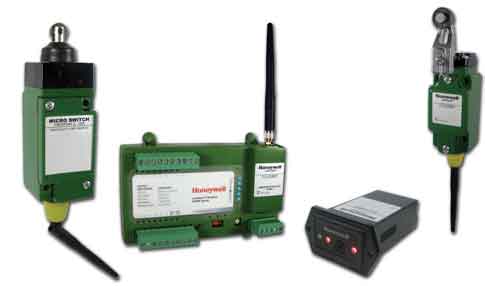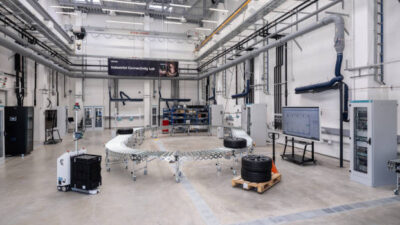Why and how are automobile manufacturing plants moving to wireless network technologies? Reasons include less cable failure, easier diagnostics and reconfiguration, and faster return on investment.

Over the last few years, many different industrial applications have become part of the wireless revolution. One of the most interesting is the automotive industry. A variety of forces drive the rapid adoption of wireless for automotive factories. These include survivability in harsh conditions, ease of troubleshooting and repair, as well as system flexibility for easy reconfiguration.
Constantly moving and twisting components shortens cable lifetimes. When combined with the hazardous chemicals often found on an assembly line, cables do not survive long and they need to be troubleshot and repaired.
Easier wireless troubleshooting
Another advantage of wireless is the reduction of downtime associated with troubleshooting and repairing an industrial wired network.
A busy automotive factory can lose a car for every two minutes the line is stopped for repair. Every minute of downtime can cost tens of thousands of dollars. Troubleshooting a wireless network is much easier and quicker than tracking down a shorted or defective cable connection.
Finding the bad spot in a cable and then working to repair it often costs more than the total parts and labor expense of installing a wireless network. It can be quite difficult to locate and then repair the bad spot in a cable as it twists and winds around complex machinery coated with heavy layers of paint, grease, and grime. Many plants simply give up on maintaining data wires, choosing instead to dump the old cables and move to industrial wireless communications. In these harsh environments, wireless switches in sealed, protective housings can successfully function far longer than cabling.
To ensure the robustness of the wireless switch network, each switch provides a way to ensure that the signal gets through to the monitoring receiver. In extremely radio frequency (RF) noisy environments or those with lots of moving equipment, switches can be programmed to retransmit the signal until it gets through. The wireless receiver monitors signal quality to ensure that it reliably receives signals from each switch node. In addition, in the case of battery powered switches, each switch has a power monitoring function that provides an alarm when the batteries begin to get low.
Quick wireless reconfiguration
Another powerful feature driving the adoption of industrial wireless in auto plants is the innate flexibility of wireless. As assembly lines are often reconfigured as new automobile product lines are introduced, not rerunning data cables is yet another great return on investment (ROI) advantage.
Using a wireless network enables quick reconfiguration of the switches and controllers, as well. Is the location of the control hub not optimal for the new assembly line plan? If so, just move it. Attach it where it works best, plug it in to power, and monitor the wireless switch network restarts. If it’s still not right, just unplug it, move it, and power it back up. Later, when it comes time to redesigning the factory floor for a new model year, the factory manager does not have to spend time remapping the data and control cable paths.
Lower wireless costs
Automotive factory managers and assembly line designers have found that the cost of going wireless is much less than the long-term, accelerating expenses of maintaining, reconfiguring, and repairing cables.
Improved wireless ROI—for repair and maintenance and lower overall operating costs, as well as flexibility of installation and reconfiguration—is the principal driver for the increasing rapid acceptance of wireless into the industrial environment.
In the last year, informed wireless buyers have become more educated in the kinds of questions to ask. They have become more comfortable implementing wireless solutions when they get the right answers.
Among questions still asked: “Is wireless secure, and can it really function in an industrial setting?” [Yes, and yes.]
Most questions now are about how wireless will work in customers’ own environments, and how to effectively replace wires and cables with wireless. A motivating factor behind the shift is the freedom, value, and ROI that wireless delivers to factories and industrial plants.
– Todd Hanson is director of wireless solutions, Honeywell Sensing and Control; Edited by Mark T. Hoske, content manager CFE Media, Control Engineering, Plant Engineering, and Consulting-Specifying Engineer. He can be reached at [email protected].
www.honeywell.com/ps/wireless
https://www.controleng.com/wireless
Sensor selection: Consider more than capital costs
(Originally posted May 18. Date changed for inclusion in subsequent newsletter.)



